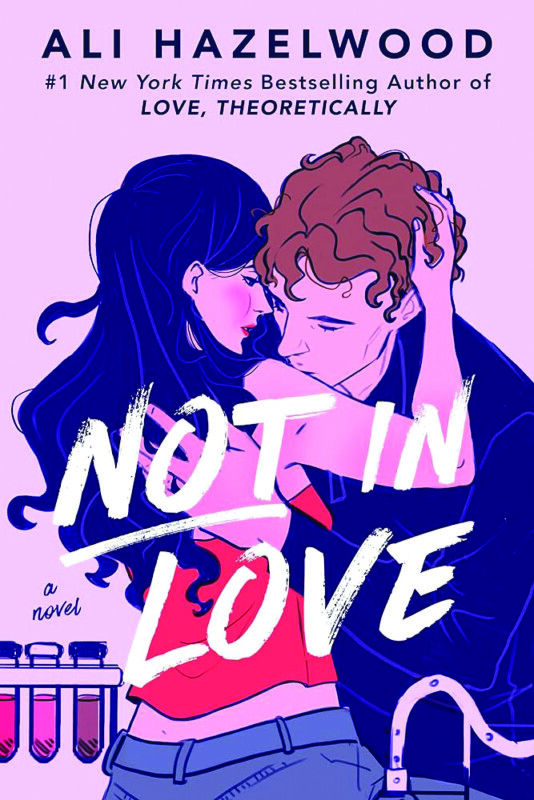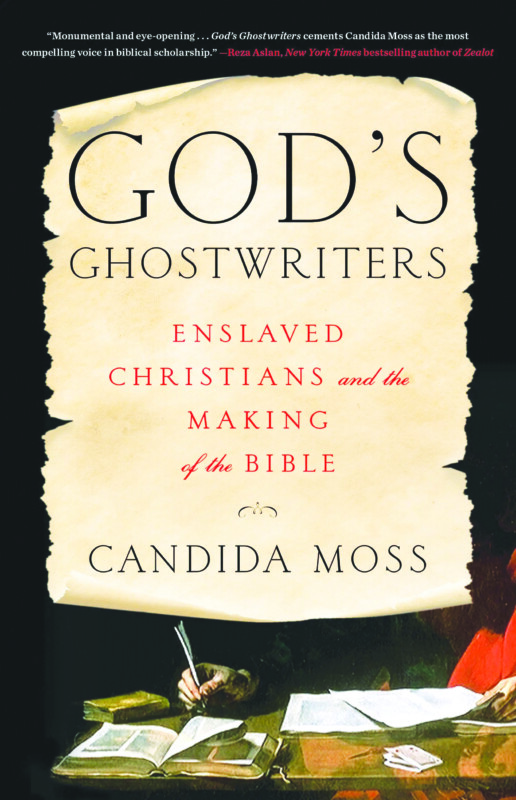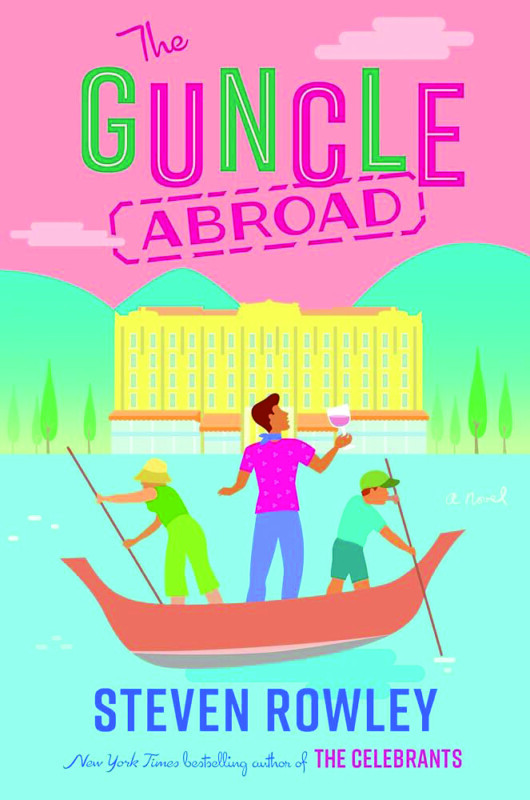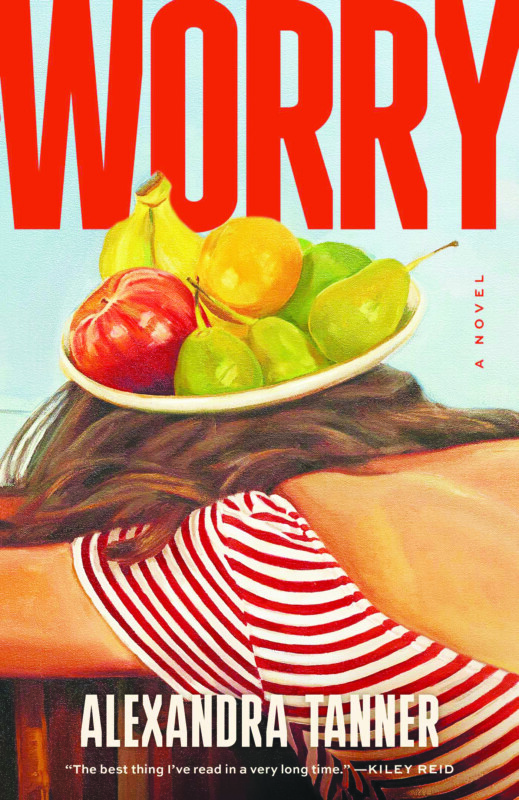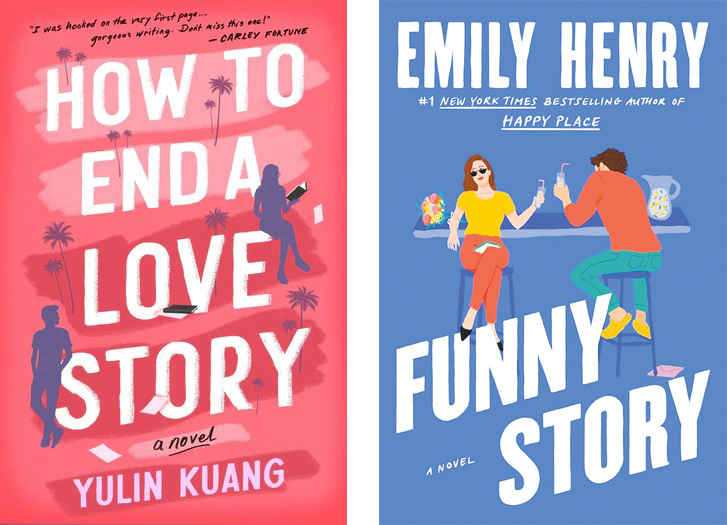Not in Love,by Ali Hazelwood (Berkley, 400 pages)
Ali Hazelwood prefaces her latest book with what is, essentially, a fair-warning note to her readers: Not in Love, she says “is, tonally, a little different from the works I’ve published in the past. Rue and Eli have dealt with — and still deal with — the fallout from issues such as grief, food insecurity, and child neglect. They are eager to make a connection but are not sure how to go about it except through a physical relationship. The result is, I think, less of a rom-com and more of an erotic romance.”
Hazelwood has thus far been known by fans mainly as a rom-com writer who creates smart female lead characters and puts them in STEM-related work environments amongst other smart people and, inevitably, a male counterpoint. In Not in Love, Rue is a biotech engineer working in food science, so we’ve got the STEM setting, and we have the male counterpoint – in this case, his name is Eli, and he works for a company that’s trying to take over Kline, the company Rue works for.
The difference between Not in Love and Hazelwood’s other STEM romances is a much stronger emphasis on sexual chemistry and very explicitly written descriptions of what happens when that chemistry ignites. When Hazelwood warns readers that this is more “erotic romance” than rom-com, she’s not kidding.
But, in addition to the (plentiful) steamy scenes, everything I’ve liked about Hazelwood’s rom-coms is here too: witty banter, emotional complexity and well-drawn characters.
I love that Rue is science-smart but not unapproachable; there are plenty of relatable I-need-to-Google-this types of moments. Case in point, the book opens with Rue and her friend Tisha trying to figure out what a loan assignment is; they ask her friend’s sister, a lawyer, who doesn’t understand their lack of comprehension (“You guys are doctors,” she says, to which Tisha points out that “the topic of private equity firms and loan assignments did not come up in any class during our chemical engineering PhDs. A shocking oversight, I know….”).
Meanwhile, Rue could not be convinced to dumb down the title of her Ph.D. presentation: “A Gas Chromatography and Mass Spectrometry Investigation of the Effect of Three Polysaccharide-Based Coatings on the Minimization of Postharvest Loss of Horticultural Crops.” Her unapologetic thought is, “I had no talent for enticing people to care about my work: either they saw its value, or they were wrong.”
Rue is unapologetic about her dating life, too. She has a “no repeats” rule, meaning one and done, no exceptions; she doesn’t want a relationship, or the emotions that go with it. That was her plan when she matched with Eli on a dating app. She didn’t expect to ever see him again, so of course he ends up at the center of her workplace drama.
Rue probably could have stuck to her no repeats rule — she’s that emotionally stunted — but Eli falls hard for her. I like that the book moves between Rue’s point of view and Eli’s, because we can see how intense his feelings, emotional and otherwise, are, compared to her internal hesitations. And yet Eli is nothing but respectful to her and her hesitations, despite his desire for more, which makes him a very likable character.
The supporting characters aren’t always likable, but intentionally so — they all have a purpose and elevate the story, and many of their interactions with Rue and Eli are hilarious, adding to the novel’s smart, sassy vibe.
The plot is intriguing and believable, as Rue tries to save her scientific work from the grasp of Eli’s company, thinking — incorrectly, of course — that they’re being greedy. More seriously, as Hazelwood points out, there are mentions of grief, food insecurity and child neglect, but it’s not as depressing as it sounds. They’re issues that Rue and Eli dealt with that still impact them as adults, but there are no heavy-handed lessons or weepy sob stories — just real, life-goes-on reminders that what’s in the past doesn’t always stay in the past, and it can take a lot of work to build trust and open your heart after it’s been hurt.
This is another winner for Hazelwood, and I would highly recommend it to anyone who likes their romantic fiction smart, emotional and extra spicy. Just not you, Mom, and if you do read this, please never tell me. A-

